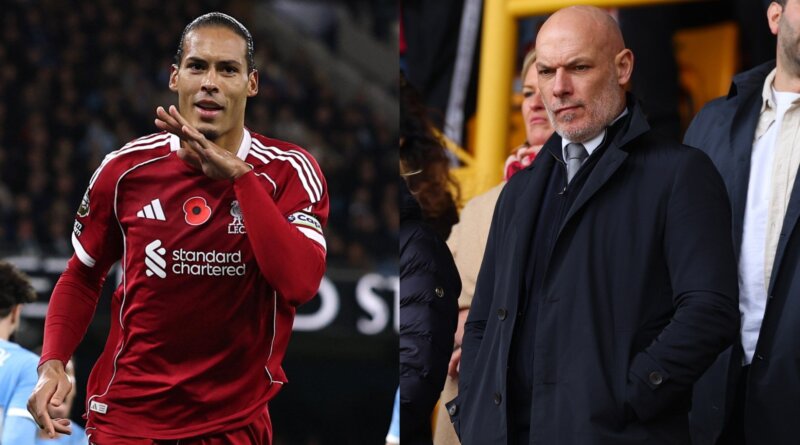Van Dijk Goal Disallowed: PGMOL Explains Liverpool Controversy
Liverpool’s Disallowed Van Dijk Goal: Full Explanation from PGMOL
Virgil van Dijk’s disallowed goal against Manchester City became the center of controversy for Liverpool fans, and now the Professional Game Match Officials Limited (PGMOL) has provided a detailed explanation defending the decision. After Liverpool’s formal complaint, PGMOL chief Howard Webb insisted that the VAR ruling was correct, clarifying why Van Dijk’s goal was chalked off during the Reds’ 3-0 defeat at the Etihad.
Inside the Controversial Offside Decision
The drama unfolded with City leading 1-0, when Van Dijk’s powerful header seemed to have given Liverpool a crucial equalizer. However, the assistant referee’s flag went up for offside, with referee Chris Kavanagh disallowing the goal. VAR, led by Michael Oliver, reviewed the incident and confirmed the on-field call.
The decision focused on Andy Robertson’s position and movement. Although Robertson did not touch the ball, his ducking motion under Van Dijk’s header, while standing just three yards from goal, was deemed an “obvious action” that interfered with Manchester City goalkeeper Gianluigi Donnarumma’s ability to react. According to Law 11, involvement in active play—such as obstructing an opponent—can lead to an offside decision, even without touching the ball.
Liverpool argued that Robertson’s action neither blocked Donnarumma’s view nor directly hindered his movement, but the match officials and VAR disagreed.
PGMOL Chief Webb: Why the Decision Stands
Howard Webb spoke about the incident on the “Match Officials Mic’d Up” program, acknowledging the subjective nature of such calls. He explained, “Interfering with an opponent where the offside position player doesn’t play the ball is one of the most subjective decisions. In this case, Robertson ducked below the ball right in front of the goalkeeper. The officials judged that this movement was enough to impact Donnarumma’s ability to react.”
Webb added that, according to VAR protocol, unless the on-field decision is “clearly and obviously wrong,” the VAR will not overturn it. After reviewing the evidence, VAR determined that the ruling was not a clear and obvious error, thus allowing the referee’s initial call to stand.
Factors Beyond Line of Vision in Offside Calls
Webb emphasized that more than just line of vision is considered in such decisions. He stated, “Even if the goalkeeper can see the ball, the proximity of the offside player and their actions—such as ducking—can cause hesitation or interfere with the keeper’s ability to save.” This means Robertson’s movement so close to Donnarumma was enough for the officials to consider it interference.
Comparisons to Previous Offside Incidents
Liverpool manager Arne Slot pointed to a similar controversy from last season, referencing a Manchester City goal against Wolves that was allowed despite a potential offside by Bernardo Silva. Webb addressed this, explaining the difference: “Bernardo Silva moved away from the ball’s flight and did not affect the goalkeeper, whereas Robertson ducked directly under the ball, potentially causing hesitation for Donnarumma.”
Impact on the Match and the Premier League Standings
Following the decision, Liverpool’s frustration was evident, but Manchester City capitalized on the momentum shift. Guardiola’s side scored twice more—Jeremy Doku adding a third—to seal a convincing 3-0 victory and maintain their unbeaten record at the Etihad. The win moved City to second place in the Premier League, narrowing the gap with leaders Arsenal to four points.
For More News and Updates
To stay updated on all the latest football developments, transfer news, and in-depth match analysis, visit our homepage for more news.
Opinion: A Tough Call, but Consistency Is Key
This incident highlights the inherent subjectivity in offside law enforcement, particularly when interpreting what constitutes interfering with an opponent. While Liverpool supporters will feel aggrieved by the decision, PGMOL’s explanation aligns with current regulations. Ultimately, the most important takeaway is the need for consistency in applying these rules so fans and clubs alike can trust the integrity of the game.
Your global gateway to nonstop football coverage:
News Goal
Share this content:
